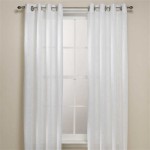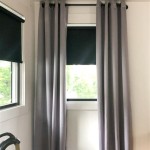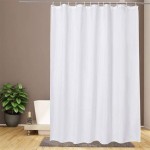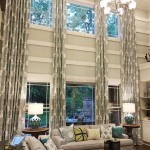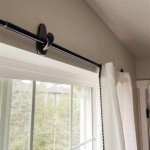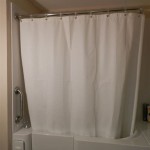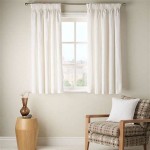How To Make A Room Dark Without Curtains
Achieving optimal darkness in a room, whether for sleeping, watching movies, or photography, often calls for more than just closing curtains. Curtains themselves can be expensive, stylistically unsuitable, or impractical for a given space. Fortunately, numerous other effective strategies exist for minimizing light infiltration and creating a darker environment.
Blackout Window Film
Blackout window film provides a cost-effective and readily available solution. This adhesive film is applied directly to the window glass, effectively blocking a significant portion of incoming light. Available in various sizes and tints, from light filtering to complete blackout, window film offers customization to suit individual needs. Installation is generally straightforward, involving cleaning the window, measuring and cutting the film, and applying it with a squeegee to remove air bubbles. Removing the film is also relatively simple, leaving no residue in most cases. This makes it a particularly attractive option for renters or those who frequently change their décor.
Blackout window film is particularly effective in blocking UV rays, an important consideration for protecting furniture and flooring from sun damage. Additionally, the film can provide added insulation, helping to regulate room temperature and potentially reduce energy costs.
DIY Cardboard Blackout Shades
For a budget-friendly and temporary solution, cardboard blackout shades offer an effective means of light exclusion. This method involves measuring the window dimensions and cutting cardboard to the appropriate size. The cardboard is then placed securely in the window frame, creating a barrier against incoming light. For enhanced aesthetics and light blocking, the cardboard can be painted black or covered with dark fabric.
While not as aesthetically pleasing as some other options, cardboard blackout shades are highly effective at blocking light, especially in situations requiring temporary darkening, such as during a specific project or for shift workers sleeping during daylight hours. This method is also easily adaptable to unusual window shapes and sizes.
Room Darkening Blinds
Room darkening blinds, often referred to as blackout blinds, offer a more permanent and stylish alternative to curtains. These blinds typically feature a tight-fitting design and opaque material that effectively minimizes light penetration. They are available in a range of materials, including cellular shades, roller shades, and Roman shades, offering a variety of aesthetic choices to complement existing décor.
Room darkening blinds offer several advantages beyond light blocking. They can contribute to improved insulation, reducing energy consumption and mitigating noise levels. Many room darkening blind options also feature cordless operation, enhancing child safety and providing a cleaner aesthetic. The increased privacy they offer is another significant benefit.
Weatherstripping and Gap Fillers
Even with blackout methods in place, light can still seep through cracks and gaps around windows. Weatherstripping and gap fillers provide a crucial secondary defense against light infiltration. Applying weatherstripping tape around the window frame seals any gaps between the frame and the wall, while gap fillers can be used to plug any holes or cracks in the window frame itself. These measures not only enhance light blocking but also improve energy efficiency by reducing drafts.
Several types of weatherstripping are available, including foam tape, felt weatherstripping, and silicone sealant. Choosing the right type depends on the size of the gaps and the type of window frame. Careful application ensures optimal sealing and effectiveness. Regularly checking and replacing worn weatherstripping is vital for maintaining its efficiency.
Strategic Furniture Placement
While not a light-blocking technique in itself, strategic furniture placement can complement other methods and further reduce light intrusion. Positioning tall bookcases or wardrobes against windows partially blocks incoming light. This strategy can be particularly effective for windows that receive indirect light or for rooms where complete darkness is not essential.
Combining furniture placement with other light-blocking techniques, such as window film or blinds, creates a layered approach to light control. This allows for flexibility in adjusting the level of darkness based on individual preferences and the time of day. In addition to light control, strategically placed furniture can also enhance privacy and contribute to the overall aesthetics of the room.

13 Ways To Brighten A Dark Room

7 Paint Mistakes That Can Make Your Home Look Smaller

5 Design Tricks To Brighten A Dark Room Setting For Four Interiors

50 Gorgeous Window Treatment Ideas For 2025

How To Lighten Up A Dark Room 15 Fantastic Ideas Sunny Side Design

5 Design Tricks To Brighten A Dark Room Setting For Four Interiors

The Best Blackout Curtain Alternatives To Consider What For

Solutions For How To Brighten A Dark Room The Shade

8 Ideas For Modern Window Treatments The Shade

54 Window Treatment Ideas To Elevate Your Space In 2025

